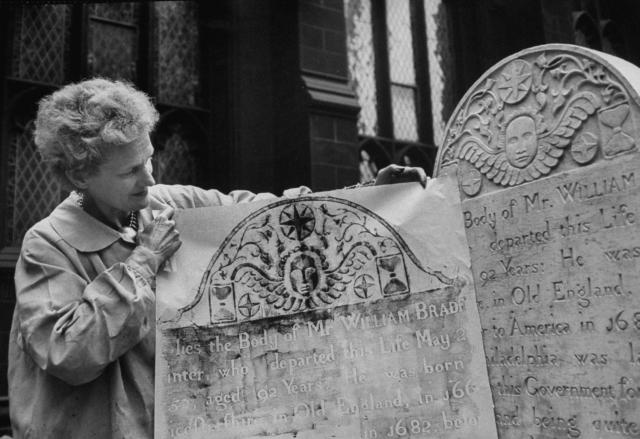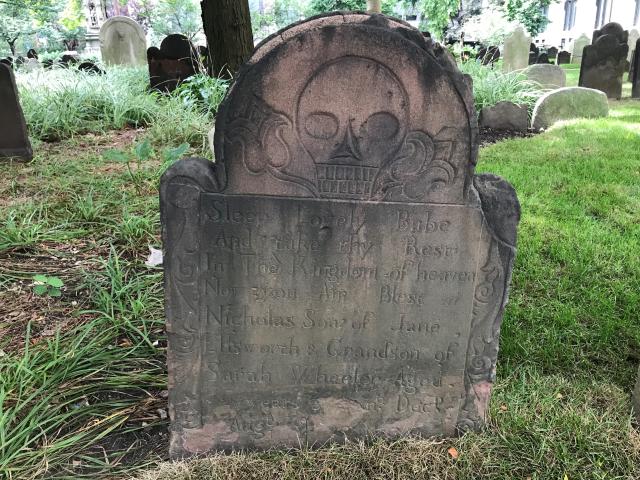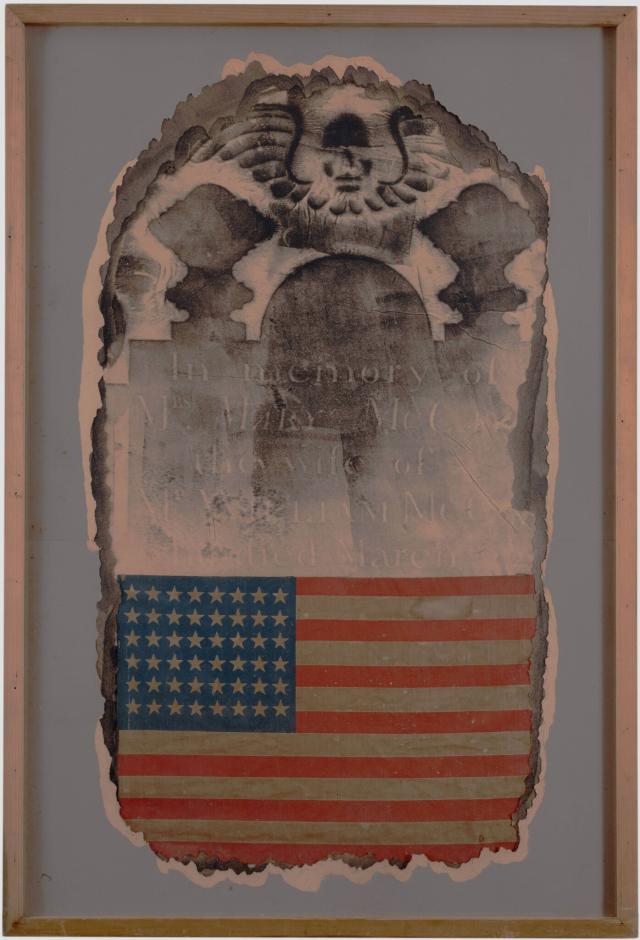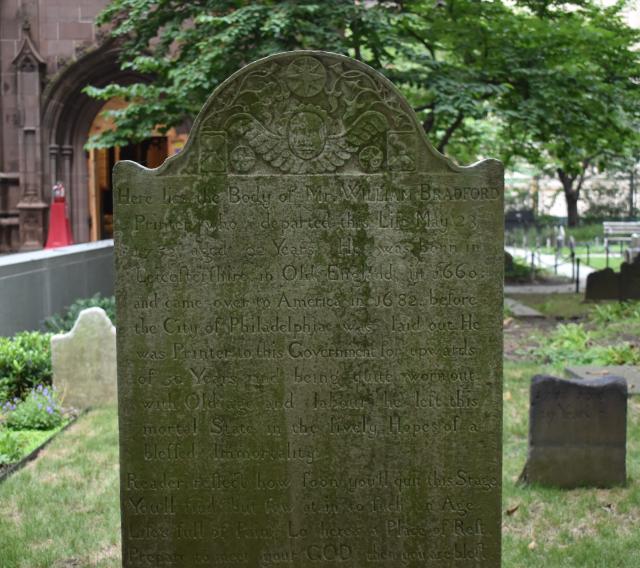Trinity Tombstone Tracings: The Art of Sari Dienes
A recent exhibit at The Museum of Modern Art (MoMA) drew renewed attention to an artist whose creative work has a direct connection to Trinity Church Wall Street.
Sari Dienes, born in Hungary in 1898, came to New York in 1939, but could not return to Europe because of the outbreak of World War II. Her art took multiple forms, especially the use of “found” objects and, in the early 1950s, a style of art called surface printing.
“The idea of using a print roller or brayer to reveal the surface below came out of her experience at Atelier 17, which was the name of Stanley Hayter's studio,” said Barbara Pollitt, curator of the Sari Dienes Foundation.
Surface printing drew Dienes to the Trinity churchyard where she made etchings from the words and images on tombstones.
“I don't know how Sari connected to the Trinity Churchyard,” Pollitt said. “She had been doing the rubbings, starting at Cummington, Massachusetts in 1953. Probably coming back to New York City, she found the oldest graveyard in Manhattan and started work.”
Perhaps the high-water mark for Dienes, at least in terms of public exposure, was a photo of her on a 1954 cover of Life magazine. In the photo (above), Dienes works in the Trinity churchyard on the tombstone of William Bradford, who died in 1752.
Bradford was a prominent citizen, who was born in England, followed William Penn in emigrating to Philadelphia and then, as royal printer for New York, published the colony's first newspaper, the New-York Gazette.
Dienes’ art also utilized the Trinity churchyard tombstones of the less famous, such as that of Nicholas Ellsworth (below), who died in August 1831, four months before his third birthday, and whose tombstone inscription begins: “Sleep Lovely Babe.”
Sari Dienes moved in a wide and diverse circle of mid-20th-century New York City artists.
“The people in Sari’s world were Jasper Johns, Robert Rauschenberg, Rachel Rosenthal, Carolee Schneemann, Suzi Gablik, Louise Nevelson, Amédée Ozenfant, Stella Snead, and Leonora Carrington,” said Pollitt.
“They were very competitive, and the men were dominant.
“Her friendship with [musician] John Cage and Ray Johnson were pivotal relationships as well, since they shared her interest in Zen Buddhism.”
Sari Dienes remained active in New York as both an artist and teacher for the rest of her life. Visitors to her apartment above the Ear Inn on Spring Street ranged from Salvador Dalí to John Lennon.
Arguably, her most famous work is “Tomb” (above), which features a tombstone image above a tattered U.S. flag.
Writing in an online magazine for the recent MoMA exhibit, curator Samantha Friedman wondered if “Tomb” may have reflected the social and political context of the time.
“I can’t help but think about the thematic ways that a tombstone and a flag are speaking to each other in 1953, 1954, at the height of the McCarthy era,” Friedman said. “Is it some kind of comment about the state of America?”
In her 1992 obituary in The New York Times, Dienes was described as having a “lasting faith in the power of the found object.
“Nothing is so humble that it cannot be made into art,” she once said, according to the Times.
Barbara Pollitt goes further in her description of the legacy of Sari Dienes.
“For me, Sari’s legacy is more than faith in the found object,” Pollitt said. “It is the idea of beauty found everywhere, and [that] the interaction of material in the artist’s hands can lead to invention, the unknown, and revelation.”
Dienes’ surface print art of the 1950s included, among many other quotidian sights, New York City sidewalks and manhole covers. Over the past half-century, presumably most, if not all, of those sidewalks have been repaved and some of the manhole covers replaced.
Not so the source of Dienes’ inspiration at the Trinity churchyard, where grave markers, some already two centuries old when Dienes discovered them, still stand as ongoing witnesses to her creative art.



